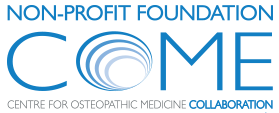Dynamic touch reduces physiological arousal in preterm infants: A role for c-tactile afferents?
Preterm birth is a significant risk factor for a range of long-term health problems and developmental disabilities. Though touch plays a central role in many perinatal care strategies, the neurobiological basis of these approaches is seldom considered. C-Tactile afferents (CTs) are a class of unmyelinated nerve fibre activated by low force, dynamic touch. Consistent with an interoceptive function, touch specifically targeted to activate CTs activates posterior insular cortex and has been reported to reduce autonomic arousal. The present study compared the effect of 5 min of CT optimal velocity stroking touch to 5 min of static touch on the heart-rate and oxygen saturation levels of preterm infants between 28- & 37-weeks gestational age. CT touch produced a significant decrease in infants’ heart-rates and increase in their blood oxygenation levels, which sustained throughout a 5-min post-touch period. In contrast, there was no significant change in heart-rate or blood oxygenation levels of infants receiving static touch. These findings provide support for the hypothesis that CTs signal the affective quality of nurturing touch, providing a neurobiological substrate for the apparent beneficial effects of neonatal tactile interventions and offering insight for their optimisation … MORE







